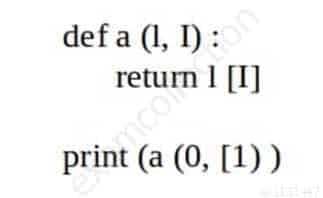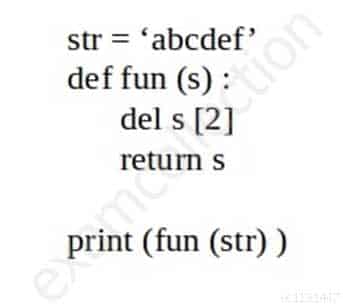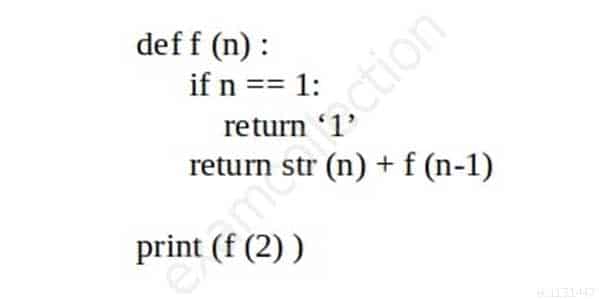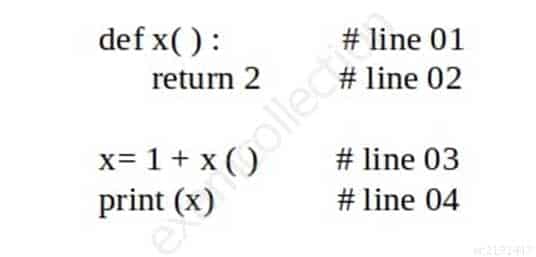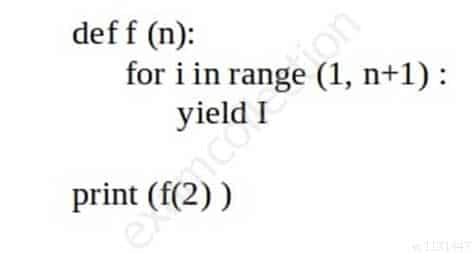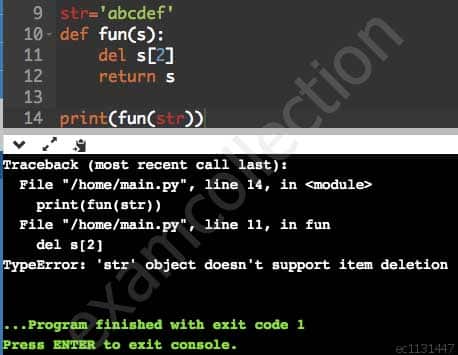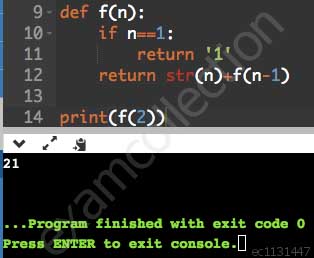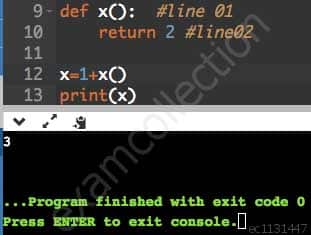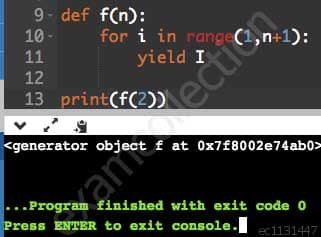Can a module run like regular code?
yes, and it can differentiate its behavior between the regular launch and import it depends on the Python version
yes, but in cannot differentiate its behavior between the regular launch and import
no, it is not possible; a module can be imported, not run
Select the valid fun () invocations:
PCAP Certified Associate in Python Programming Part 02 Q02 025
fun (b=1)
fun (a=0) fun (b=1, 0)
fun (1)
A file name like this one below says that:
services, cpython 36.pyc
the interpreter used to generate the file is version 3.6 it has been produced by CPython it is the 36th version of the file
the file comes from the services.py source file
What is the expected behavior of the following snippet?
PCAP Certified Associate in Python Programming Part 02 Q04 026 It will:
cause a runtime exception print 1
print 0, [1]
print [1]
Explanation:
PCAP Certified Associate in Python Programming Part 02 Q04 027
What can you do if you don’t like a long package path like this one?
PCAP Certified Associate in Python Programming Part 02 Q05 028
you can make an alias for the name using the alias keyword
nothing, you need to come to terms with it
you can shorten it to alpha . zeta and Python will find the proper connection
you can make an alias for the name using the as keyword
Explanation:
Reference : https://stackoverflow.com/questions/706595/can-you-define-aliases-for-imported-modules-in-python
What is the expected output of the following code?
PCAP Certified Associate in Python Programming Part 02 Q06 029
abcef
The program will cause a runtime exception/error acdef
abdef
Explanation: PCAP Certified Associate in Python Programming Part 02 Q06 030
What is the expected output of the following code?
PCAP Certified Associate in Python Programming Part 02 Q07 031 Explanation: PCAP Certified Associate in Python Programming Part 02 Q07 032
What is the expected behavior of the following snippet?
PCAP Certified Associate in Python Programming Part 02 Q08 033 It will:
cause a runtime exception on line 02
cause a runtime exception on line 01
cause a runtime exception on line 03
print 3
Explanation: PCAP Certified Associate in Python Programming Part 02 Q08 034
What is the expected behavior of the following code?
PCAP Certified Associate in Python Programming Part 02 Q09 035 It will:
print 4321
print <generator object f at (some hex digits)> cause a runtime exception
print 1234
Explanation: PCAP Certified Associate in Python Programming Part 02 Q09 036
If you need a function that does nothing, what would you use instead of XXX? (Choose two.)
PCAP Certified Associate in Python Programming Part 02 Q10 037 Explanation:
Reference : https://www.pythoncentral.io/python-null-equivalent-none/
Is it possible to safely check if a class/object has a certain attribute?
yes, by using the hasattr attribute
yes, by using the hasattr ( ) method yes, by using the hassattr ( ) function
no, it is not possible
Explanation:
Reference : https://stackoverflow.com/questions/610883/how-to-know-if-an-object-has-an-attribute-in-python
The first parameter of each method:
holds a reference to the currently processed object
is always set to None
is set to a unique random value
is set by the first argument’s value
Explanation:
Reference : https://pythontips.com/2013/08/07/the-self-variable-in-python-explained/
The simplest possible class definition in Python can be expressed as:
class X: class X:
class X:
class X: { }
Explanation:
Reference : https://docs.python.org/3/tutorial/classes.html
If you want to access an exception object’s components and store them in an object called e, you have to use the following form of exception statement:
except Exception (e) :
except e= Exception :
except Exception as e: such an action is not possible in Python
Explanation:
Reference : https://stackoverflow.com/questions/32613375/python-2-7-exception-handling-syntax
A variable stored separately in every object is called:
there are no such variables, all variables are shared among objects
a class variable
an object variable
an instance variable
There is a stream named s open for writing. What option will you select to write a line to the stream?
s. write (“Hello\n”) write (s, “Hello”)
s.writeln (“Hello”)
s. writeline (“Hello”)
Explanation:
Reference : https://en.wikibooks.org/wiki/Python_Programming/Input_and_Output
You are going to read just one character from a stream called s. Which statement would you use?
ch = read (s, 1)
ch= s.input (1)
ch= input (s, 1)
ch= s.read (1)
Explanation:
Reference : https://stackoverflow.com/questions/510357/python-read-a-single-character-from-the-user
What can you deduce from the following statement? (Choose two.)
PCAP Certified Associate in Python Programming Part 02 Q18 037
str is a string read in from the file named file.txt a newline character translation will be performed during the reads
if file. txt does not exist, it will be created
the opened file cannot be written with the use of the str variable
The following class hierarchy is given. What is the expected out of the code?
PCAP Certified Associate in Python Programming Part 02 Q19 038
Python’s built in function named open () tries to open a file and returns:
an integer value identifying an opened file
an error code (0 means success)
a stream object always None

